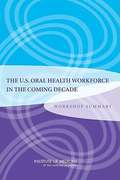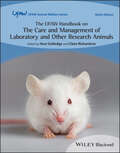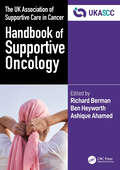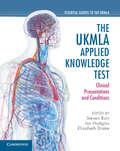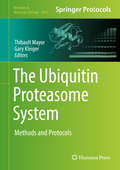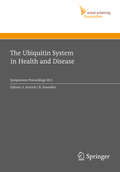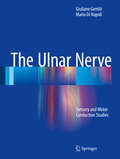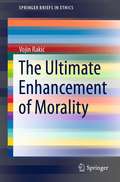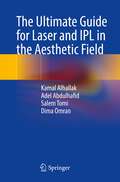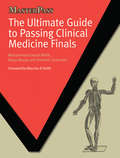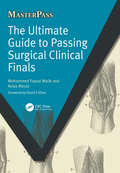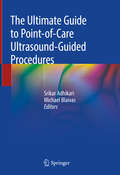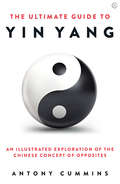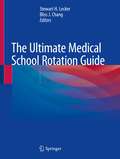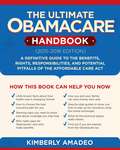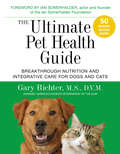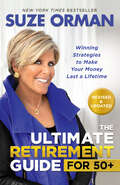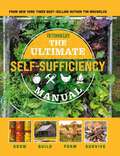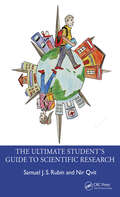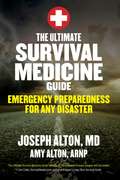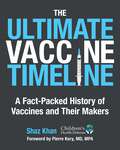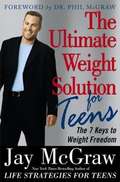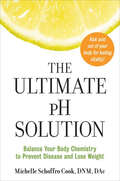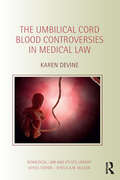- Table View
- List View
The U.S. Oral Health Workforce in the Coming Decade: Workshop Summary
by Institute of MedicineAccess to oral health services is a problem for all segments of the U.S. population, and especially problematic for vulnerable populations, such as rural and underserved populations. The many challenges to improving access to oral health services include the lack of coordination and integration among the oral health, public health, and medical health care systems; misaligned payment and education systems that focus on the treatment of dental disease rather than prevention; the lack of a robust evidence base for many dental procedures and workforce models; and regulatory barriers that prevent the exploration of alternative models of care. This volume, the summary of a three-day workshop, evaluates the sufficiency of the U.S. oral health workforce to consider three key questions: What is the current status of access to oral health services for the U.S. population? What workforce strategies hold promise to improve access to oral health services? How can policy makers, state and federal governments, and oral health care providers and practitioners improve the regulations and structure of the oral health care system to improve access to oral health services?
The UFAW Handbook on the Care and Management of Laboratory and Other Research Animals (UFAW Animal Welfare)
by Claire Richardson Huw GolledgeThe UFAW Handbook on The Care and Management of Laboratory and Other Research Animals The latest edition of the seminal reference on the care and management of laboratory and research animals The newly revised ninth edition of The UFAW Handbook on the Care and Management of Laboratory and Other Research Animals delivers an up-to-date and authoritative exploration on worldwide developments, current thinking, and best practices in the field of laboratory animal welfare science and technology. The gold standard in laboratory and captive animal care and management references, this latest edition continues the series’ tradition of excellence by including brand-new chapters on ethical review, the care of aged animals, and fresh guidance on the care of mole rats, corvids, zebrafish, and decapods. The book offers introductory chapters covering a variety of areas of laboratory animal use, as well as chapters on the management and care of over 30 different taxa of animals commonly utilised in scientific procedures and research around the world. It also provides: A thorough introduction to the design of animal experiments, laboratory animal genetics, and the phenotyping of genetically modified mice Comprehensive explorations of animal welfare assessment and the ethical review process Practical discussions of legislation and oversight of the conduct of research using animals from a global perspective In-depth examinations of the planning, design, and construction of efficient animal facilities, special housing arrangements, and nutrition, feeding, and animal welfare The UFAW Handbook on the Care and Management of Laboratory and Other Research Animals Ninth Edition is essential for laboratory animal scientists, veterinarians, animal care staff, animal care regulatory authorities, legislators, and professionals working in animal welfare non-governmental organizations.
The UK Association of Supportive Care in Cancer Handbook of Supportive Oncology
by Richard Berman FrcpWhat does supportive oncology do that palliative care doesn’t already do? Answering that question forms part of the rationale behind this text. Supportive oncology is delivered across the whole cancer experience from diagnosis through treatment to post-treatment care, and so necessitates the involvement of most clinical specialties and many non-clinical services. Palliative care – which focuses on advanced disease and end of life – has a special and important role within this broader and longer-term scope of supportive care in cancer.This handbook defines the new and emerging specialty of supportive oncology and equips the workforce with the appropriate skill sets: Providing personalized and targeted treatments consistent with the stage of disease A focus on preservation and improvement in quality of life Affecting survival and the quality of that survival Permitting the use of the most effective anti-cancer agents Assisting in accurate diagnosis and management
The UKMLA Applied Knowledge Test: Clinical Presentations and Conditions (Essential Guides to the UKMLA)
by Steven Burr Elizabeth Drake Ian HodginsAre you a medical student preparing for the UKMLA exam? Look no further than The UKMLA Applied Knowledge Test: Clinical Presentations and Conditions. This comprehensive revision guide is an essential resource for any student looking to succeed in the exam. The text follows the General Medical Council's exam content map, covering all of the clinical presentations and conditions listed as being required for the examination. The text is further organised by 18 areas of clinical practice, each led by a specialist in the relevant field. The book features over 450 colour illustrations, and follows an easy to read, consistent layout throughout. Each topic covers clinical examination, diagnosis, management, treatment options and more. An essential preparation guide for UK based medical students, and students sitting the PLAB examination.
The Ubiquitin Proteasome System: Methods And Protocols (Methods in Molecular Biology #1844)
by Thibault Mayor Gary Kleiger“This volume explores numerous techniques used to study the ubiquitin proteasome system. The chapters in this book are organized into five parts and cover topics such as determining the mechanisms of action for E2s, E3s, and DUB enzymes; the latest advances to study the formation of poly-ubiquitin chains as well as their linkage types; the binding partners of proteins in the UPS; methods for structure determination by x-ray crystallography, cryo electron microscopy and SAXS; screening assays to select for degrons or modulators of E3s and DUBs; proteomics approaches in the ubiquitin field and methods to study 26S proteasome function. Written in the highly successful Methods in Molecular Biology series format, chapters include introductions to their respective topics, lists of the necessary materials and reagents, step-by-step, readily reproducible laboratory protocols, and tips on troubleshooting and avoiding known pitfalls. Thorough and authoritative, The Ubiquitin Proteasome System: Methods and Protocols is a valuable resource for both experienced and novice scientists who are interested in expanding their knowledge in this field.
The Ubiquitin System in Health and Disease
by Bernhard Haendler Stefan JentschThe ubiquitin system plays an essential role in numerous cellular processes by controlling protein stability and function. A deregulation of this system has been reported in various pathologies including cancer, neurodegenerative diseases and immune disorders. Most of the enzymes involved in adding or removing ubiquitin chains have been identified, but often their direct substrate and the type of ubiquitylation remains to be clarified. A better understanding of the mechanisms governing these processes is likely to allow the identification of novel targets for pharmacological intervention and pave the way for improved therapies. The latest developments in this rapidly moving field are presented in this book.
The Ulnar Nerve
by Giuliano Gentili Mario Di NapoliThis book systematically reviews sensory and motor nerve conduction studies on the ulnar nerve, from pilot human studies of peripheral nerve conduction in the 1950s through to the most recent scientific evidence. Precise descriptions are provided of approx. 70 nerve conduction techniques that were reproduced in the laboratory, with organization of the techniques according to practical criteria for ease of reference. Particular attention is devoted to those techniques that have shown higher sensitivity and specificity in diagnosis of compressive mononeuropathies, such as ulnar neuropathy at the elbow or wrist. Normal and pathological values derived from the original articles and the subsequent literature are presented, and the wealth of illustrative material facilitates comprehension and reproduction of each technique. The volume is completed by a detailed, well-illustrated glossary explaining the more commonly used terms in electrodiagnostic medicine. This book will appeal to novice and experienced neurologists, students, clinical neurophysiology technicians, and rehabilitation physicians. It represents a logical extension of the volumes on the median nerve recently published by Springer.
The Ultimate Enhancement of Morality (SpringerBriefs in Ethics)
by Vojin RakićThis book deals with good, evil, happiness and morally enhanced post-humans. It offers a succinct historical elaboration of philosophical stances towards morality and happiness, focusing on Kant's ideas in particular. Human augmented ethical maturity in a futuristic version of Kant’s Ethical Commonwealth implies, among else, voluntary moral bio-enhancement (VMBE); consequently, more happiness – as morality and happiness are in a circularly supportive relationship; ultimate morality (UM). UM is in its own way a universal morality. In line with the contention that Kant’s vision of the (not immediate but more distant) future of humanity is one of a cosmopolitan moral order in which humans act virtuously in the broadest possible community, that is, humanity, it is justified to conclude that successful VMBE is conducive to Kant’s vision. In this context the book is of great interest to a broad audience, such as those interested in VMBE and novel conceptions of morality, and those with an interest in the historical development of morality and happiness, in philosophy (specifically, ethics) and in post-humanity.
The Ultimate Guide for Laser and IPL in the Aesthetic Field
by Kamal Alhallak Adel Abdulhafid Salem Tomi Dima OmranThis book offers practitioners a comprehensive reference to light-based treatments that combines theory and best practices. It is unique in that it compares the various modalities and platforms of laser and IPL treatments while also discussing the most recent technological advancements. It also includes comprehensive treatment protocols, settings, and laser operating procedures. Furthermore, the book compares the mechanism of action of different lasers based on the skin-light interaction according to wavelength, pulse width, and delivery methods, making it invaluable to new practitioners and medical directors in the aesthetic medicine field.The book includes over 100 colour images and videos to help readers better understand techniques and treatment procedures. This visual aid makes the book especially useful when following treatment protocols. Chapters delve into every aspect of laser and IPL in aesthetics, including skin anatomy, hair reduction, vascular lesions, pigmentary conditions, scar remodelling, stretch mark revision, facial rejuvenation, skin toning technologies and wrinkle reduction methods. Furthermore, the book includes two chapters that will help practitioners invest in new and refurbished laser machines. The Ultimate Guide for Laser and IPL in the Aesthetic Field, with its comprehensive coverage of laser and IPL treatments in aesthetics, is an indispensable resource for healthcare professionals looking to refine their skills or refresh their knowledge on light-based treatments. It combines theories with practical aspects to provide the reader with everything they need to know about effective treatment delivery, making it an invaluable reference for any aesthetic practitioner!
The Ultimate Guide to Passing Clinical Medicine Finals (MasterPass)
by Dominic Greenyer Mohammed Faysal Malik Asiya MaulaA well prepared student takes the initiative to create learning opportunities and propel themselves towards qualification; we find that the better prepared you are, the luckier you become. From the Preface The key to passing clinical finals is not a secret; adequate preparation and the ability to think logically and speak clearly are all hallmarks of a successful candidate. This unique guide gives final year students the knowledge and confidence required to pass their examinations with insiders' tips on particular information and skills required to be a top candidate. It is ideal as both a revision aid in the weeks leading up to the examination, and as an aide-memoire the night before.
The Ultimate Guide to Passing Surgical Clinical Finals (MasterPass)
by Mohammed Faysal Malik Asiya MaulaMedical students lack information on preparing for clinical surgical finals, particularly on common mistakes and the features which identify successful candidates. The Ultimate Guide to Passing Surgical Clinical Finals is an accessible and comprehensive preparation aid, equipping final year medical students with the knowledge and skills that they are expected to demonstrate both in clinical surgical finals and in clinical practice as junior doctors. Its tutorial-style approach provides advice on how to think logically, speak coherently, and demonstrate both breadth and depth of knowledge - all key hallmarks of successful candidates. The book's broad approach reflects the full range of skills and knowledge covered by modern curricula, including instruments, procedures and the increasing use of surgical imaging. It is vital reading for clinical year medical students preparing for final examinations in surgery, and for postgraduate students who wish to improve their presentation, viva and OSCE clinical examination skills. 'This book's approach is in the best surgical traditions of ordered thinking when it comes to the examination itself. I admire this book and commend it to you.' - From the Foreword by David E Khoo
The Ultimate Guide to Point-of-Care Ultrasound-Guided Procedures
by Michael Blaivas Srikar AdhikariThis comprehensive book provides an in-depth examination of a broad range of procedures that benefit from ultrasound guidance in the point-of-care setting. It covers common procedures such as ultrasound-guided central and peripheral venous access to regional nerve blocks, temporary pacemaker placement, joint aspirations, percutaneous drainage, a variety of injections and airway management. Chapters examine a variety of topics critical to successful ultrasound procedures, including relevant sonoantomy, necessary equipment, proper preparation, potential complications, existing evidence and how to integrate these procedures into clinical practice. For each procedure, the book includes step-by-step instructions and discusses the advantages of ultrasound guidance over traditional techniques. Providing rich procedural detail to help in clinical decision making, The Ultimate Guide to Point-of-Care Ultrasound-Guided Procedures is an indispensable, go-to reference for all health care providers who work in a variety of clinical settings including primary care, emergency department, urgent care, intensive care units, pediatrics, pre-hospital settings and those who practice in the growing number of new ultrasound programs in these specialties.
The Ultimate Guide to Yin Yang
by Antony CumminsThe first book to fully explore and explain the concept of yin yang, breaking it down in easy-to-follow terms for all those interested in Daoism, alternative medicine, martial arts and other Eastern fields of study. Illustrated with striking red/black graphics that make the concepts more accessible.The concept of yin yang can be found in some of the oldest writing in the world. It is fundamental to Chinese thought and the route to understanding most Chinese practices, from Traditional Chinese Medicine to Daoism and feng shui. It also offers us ways of enhancing our own lives, establishing greater balance not only in our own environment but also in the wider world if we can work with other people to follow nature's flow. The central question of the book is "What is yin yang?" Step by step, with plenty of helpful illustrations and graphics, it explores the history and changing uses of yin yang - not forgetting the pronunciation and spelling (why yinyang is actually better than yin yang). The book also makes suggestions for working with yin yang, from observing the landscape to get a sense of the ebb and flow of energy through the world, to studying the patterns of nature in order to take what you need but not too much, to approaching sex as a cosmic ritual. After reading this book, readers will understand how to position themselves so that yin yang fills their lives with abundance - how to be in the right place at the right time.
The Ultimate Medical School Rotation Guide
by Stewart H. Lecker Bliss J. ChangWritten by the top medical student rotators, this book provides medical students with the often elusive information and skills required to ace their clinical rotationsChapters cover all major medical sub-specialties such as internal medicine, general surgery, cardiology, dermatology, orthopedics, neurosurgery, and ophthalmology. Additionally, the book offers many novel features including a review of core rotation skills for oral presentations and a walk-through of a day in the life of the medical student on a particular rotation. It focuses on the common cases that students actually encounter in the hospital. This format thereby administers a complete, concise overview of what is needed for each rotationA unique resource, The Ultimate Medical School Rotation Guide is not only instructional and comprehensive, but also assuring and supportive as it encourages students to appreciate this rewarding time in their medical careers
The Ultimate Obamacare Handbook (2015-2016 edition): A Definitive Guide to the Benefits, Rights, Responsibilities, and Potential Pitfalls of the Affordable Care Act
by Kimberly AmadeoObamacare can save you money, but only if you know how it really works. Americans have been barraged with fifteen times more negative than positive news about Obamacare. As a result, 40 percent of the people who dislike it actually qualified for insurance subsidies and don't realize it. Hardworking, middle-class families need facts, not opinions, to get all the benefits they deserve. Here you'll find: A guide to buying low-cost health insurance Step-by-step instructions to signing up for insurance Directions to apply for Obamacare exemptions Eligibility requirements for subsidies Definitions of insurance, health care, and Obama terms Real-life stories of people who have already been helped This handbook refutes the myths about the Affordable Care Act with research-based evidence. It reveals the seven reasons why health care costs so much, as well as how the ACA attacks those costs. You'll learn who really gets benefits from subsidies and who pays for them. Most importantly, this book uncovers how the ACA might save you and your family money in 2016 and beyond.
The Ultimate Pet Health Guide: Breakthrough Nutrition and Integrative Care for Dogs and Cats
by Gary RichterAs a holistic veterinarian and scientist, Dr. Gary Richter helps dog and cat owners to navigate the thicket of treatment options and separate the fact from the fiction. He wants us to use what actually works, not just what Western science or alternative medicine say "should" work.This multifaceted approach to health is known as integrative medicine. Dr. Richter examines traditional medicine from many cultures alongside modern medical techniques, describing the best of complementary care and the best of conventional veterinary medicine. Every treatment he recommends has the backing of scientific research or years of successful outcomes in his clinical practice. After explaining the treatment, he offers specific recommendations for an integrative approach to common diseases, including allergies, skin conditions, diabetes, heart disease, and cancer.A holistic approach to health includes nutrition, as it sets up the foundation for your pet&’s health. Dr. Richter cuts through the hype in the pet-food world and explains how to choose the best commercial foods and supplements, and even includes both raw and cooked dog- and cat-food recipes for general diet as well as to treat specific needs. He also explains how we can use the right foods and supplements to "hack" the body&’s processes, including the immune system.
The Ultimate Retirement Guide for 50+: Winning Strategies to Make Your Money Last a Lifetime (Revised & Updated for 2025)
by Suze OrmanThe instant NEW YORK TIMES BESTSELLERWALL STREET JOURNAL BESTSELLERPUBLISHERS WEEKLY BESTSELLERUSA TODAY BESTSELLER#1 PERSONAL FINANCE EXPERTRevised & Updated for 2025THE PATH TO YOUR ULTIMATE RETIREMENT STARTS RIGHT HERE!Retirement today is more complex than ever before. It is most definitely not your parents' retirement. You will have to make decisions that weren't even part of the picture a generation ago. Without a clear-cut path to manage the money you&’ve saved, you may feel like you're all on your own.Except you're not—because Suze Orman has your back.Suze is America's most recognized personal finance expert for a reason. She's been dispensing actionable advice for years to people seeking financial security. Now, in this revised and updated Ultimate Retirement Guide for 50+, which reflects recent changes in retirement rules passed by Congress, Suze gives you the no-nonsense advice and practical tools you need to plan wisely for your retirement in today's ever-changing landscape.You'll find new rules for downsizing, spending wisely, delaying Social Security benefits, and more—starting where you are right now.Suze knows money decisions are never just about money. She understands your hopes, your fears, your wishes, and your desires for your own life as well as for your loved ones. She will guide you on how to let go of regret and fear, and with her unparalleled knowledge and unique empathy, she will reveal practical and personal steps so you can always live your Ultimate Retirement life."I wrote this book for you," Suze says. "The worried, the fearful, the anxious. I know you need help navigating the road ahead. I've helped steer people toward happy and secure retirements my whole life, and that's exactly what I want to do for you."
The Ultimate Self-Sufficiency Manual: 200+ Tips for Living Off the Grid
by Tim MacWelchLooking for a greater sense of control in the chaotic world of today? Concerned about your dependence on existing food and power sources, and other systems beyond your control? Empower yourself with the gift of self reliance–with the Total Self Sufficiency Manual, which has over 220 tips and techniques to empower your independence from survival expert and New York Times-bestselling author Tim MacWelch.
The Ultimate Student’s Guide to Scientific Research
by Samuel J. Rubin Nir QvitA scientific career is a long and winding journey. Many factors assemble to determine the trajectory and products of scientific inquiry. This book addresses the scientific career path comprehensively, ranging from how to build a strong foundational knowledge and skill base, to training programs, composing winning research proposals and grants, conducting excellent research, writing papers and reports, collaborative research programs, bridging academia and industry, career advancement, and more. Guides where, how, and what to study in undergraduate, post-baccalaureate, graduate, and post-graduate training programs and addresses important crossroads throughout the continuum of training and beyond. Highlights best practices, techniques, and nuances for creating a successful scientific career. Provides critical insights for traversing major milestones and decision-points in a scientific career and serves as a resources for reference throughout stages of advancement. Discusses alternative career opportunities for individuals trained in sciences. Offers students, researchers, and other scientists across all stages of their careers with accessible, engaging, and useful insider tips.
The Ultimate Survival Medicine Guide: Emergency Preparedness for Any Disaster
by Joseph Alton Amy Alton<P> The Ultimate Survival Medicine Guide: Emergency Preparedness for any Disaster is the new abridged version of the bestselling book The Survival Medicine Handbook. This unique medical book is meant to enable the average person to handle injuries and illness in situations in which modern medical facilities and professionals aren’t available due to a disaster. <P> This book is written by America’s top medical preparedness experts: Joe Alton, MD, and Amy Alton, ARNP. Their mission: to put a medically prepared person in every family for when medical help is not on the way. Using decades of medical experience, they address, in plain language, dozens of medical issues associated with surviving disasters and epidemics. The Altons also discuss the medical supplies needed to become a medical asset to your family and community as well as alternative and natural strategies for when pharmaceuticals aren’t available. <P> Most medical books will send you to the doctor or hospital when an emergency happens. The Ultimate Survival Medicine Guide assumes what might actually happen--that the average person could be left without medical help in a disaster. With this unique book, you’ll have a head start on keeping your family healthy in times of trouble.
The Ultimate Vaccine Timeline: A Fact-Packed History of Vaccines and Their Makers
by Shaz KhanDive deep into a comprehensive fact-packed history of vaccines that includes information on vaccine manufacturers and their evolution over time. Browse through an extensive series of verifiable and documented facts on vaccines. For well over a century, vaccines have been routinely recommended to billions of people worldwide, mostly children and babies. With an ever-increasing portfolio of vaccines using novel technologies on the global market, it is important now more than ever to consolidate a chronology of facts relating to human vaccination. Considering the current climate of censorship around vaccines, this publication will contribute to an expanded understanding of this important medical intervention. Spanning over fifteen hundred years, this thoroughly researched timeline is an educational tool for any researcher, student, doctor, scientist, parent, or curious human being wishing to gain a broader perspective and insight into the complex and vast landscape of human vaccination. From smallpox to shingles; tetanus to tuberculosis; hepatitis B to HPV, discover when, where, and by whom these vaccines were invented and marketed. Including a historical timeline of pharmaceutical company beginnings, mergers and acquisitions since the seventeenth century, this illustrated reference book shines a light on the controversial subject of vaccines and their makers.
The Ultimate Weight Solution for Teens: The 7 Keys to Weight Freedom
by Jay McgrawWhat his dad did for adults with "The Ultimate Weight Solution," Jay McGraw, son of Dr. Phil McGraw, now tailors for teens. This is a book to promote weight wellness for young people by the author of "Life Strategies for Teens."
The Ultimate pH Solution: Balance Your Body Chemistry to Prevent Disease and Lose Weight
by Michelle Schoffro CookControl the level of acid in your body and reclaim your health with this simple, step-by-step programBeginning a healthier lifestyle can be as easy as starting your day sipping a glass of water with a squeeze of lemon juice. Drinking this simple drink is only one of the many ways, all outlined in The Ultimate pH Solution, that you can change your body's pH and ward off disease. Too much acid in your blood can cause a host of health problems, but with cutting-edge, medically sound research, this indispensable guide offers an easy-to-follow plan and simple lifestyle changes that will help you kick acid and stay healthy.The Ultimate pH Solution also includes real-life success stories of people who have overcome disease and lost weight by balancing their pH levels, along with 50 recipes for delicious pH-powerful dishes. Learn why high-protein diets may be harmful to your health, why eating dairy may not help you avoid osteoporosis, and how to lower the acid levels in your body for optimal health.
The Umbilical Cord Blood Controversies in Medical Law (Biomedical Law and Ethics Library)
by Karen DevineSince the therapeutic value of umbilical cord blood (UCB) stem cells was first recognised in the late 1980s, there has been a proliferation of both public and private UCB banks worldwide. However, the ability to utilise such a potentially valuable resource has provoked a number of controversies. In a distinctly accessible style, this book unpacks the socio-legal implications of the UCB collection process and constructs a detailed analysis of the law and ethics that surrounds UCB banking in the UK, including ownership of the cells. Its enquiry is located within the theoretical framework of altruism versus self-interest and explores the notions of risk and choice associated with this distinctive blend of public/private healthcare provision. The book evaluates the impact of the Human Tissue Act 2004 and the European Union Tissues and Cells Directive (2004/23/EC) on the UCB industry and provides a unique insight into the effect that the law may have on the NHS whose maternity staff and premises are used to collect UCB. This book would be of interest primarily to a UK readership in addition to expectant families, health professionals, students, academics, practitioners and the UCB industry elsewhere in the world.
The Unapologetic Guide To Black Mental Health: Navigate An Unequal System, Learn Tools For Emotional Wellness, And Get The Help You Deserve
by Rheeda WalkerWe can’t deny it any longer: there is a Black mental health crisis in our world today. Black people die at disproportionately high rates due to chronic illness, suffer from poverty, under-education, and the effects of racism. This book is an exploration of Black mental health in today’s world, the forces that have undermined mental health progress for African Americans, and what needs to happen for African Americans to heal psychological distress, find community, and undo years of stigma and marginalization in order to access effective mental health care. <p><p> In The Unapologetic Guide to Black Mental Health, psychologist and African American mental health expert Rheeda Walker offers important information on the mental health crisis in the Black community, how to combat stigma, spot potential mental illness, how to practice emotional wellness, and how to get the best care possible in system steeped in racial bias. <p> It’s past time to take Black mental health seriously. Whether you suffer yourself, have a loved one who needs help, or are a mental health professional working with the Black community, this book is an essential and much-needed resource.
